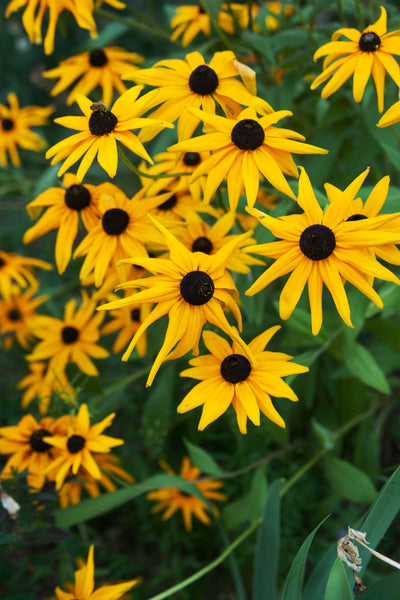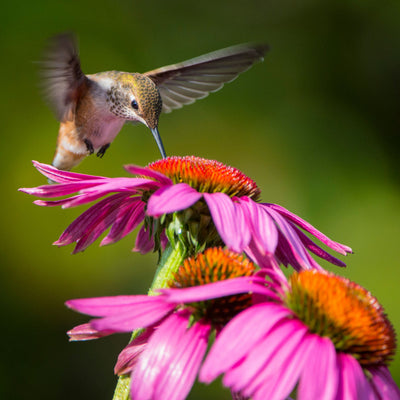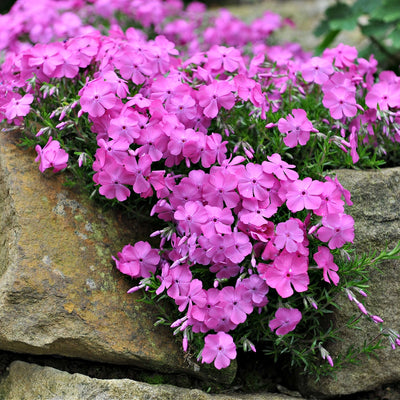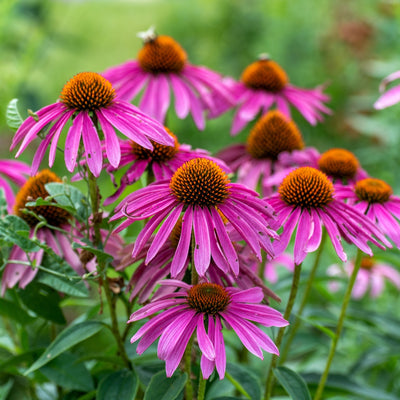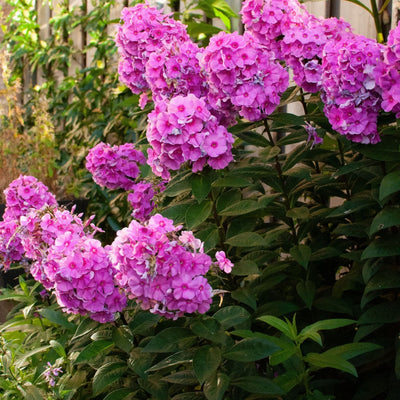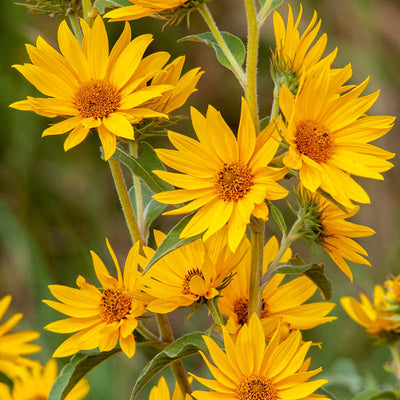
Planting Coneflower: Easy Guide for Vibrant Garden Blooms
Share
Getting your hands dirty with planting coneflower? These resilient and vibrant blooms not only add splashes of color to any garden but also offer a range of benefits that extend beyond their beauty. We'll provide you with essential tips and advice on successfully growing coneflowers in their initial year.
We'll cover selecting the perfect spot for your coneflowers, preparing your soil, and ensuring they flourish. We'll also discuss watering, fertilizing tips, and how deadheading spent flowers encourages more blooms.
Additionally, we'll explore the unexpected medicinal benefits of echinacea (coneflowers) and ways to attract wildlife to your garden. Let's dive in!
A Spring-Themed Guide to Planting Coneflower
Dive into the essentials of planting and caring for coneflowers, from selecting the right location to ensuring their successful growth in your garden.
Selecting the Perfect Spot
When it comes to planting coneflowers, finding the perfect spot is the first step. These resilient beauties thrive in full sun and require well-drained soil. Ideally, they should receive at least six hours of sunlight daily. While coneflowers are not overly particular about soil type, good drainage is essential to prevent waterlogging.
The Best Time to Plant
Schedule your planting to give coneflowers a strong start. Find a spot that receives full sun and has well-drained soil. Coneflowers thrive in zones 3 to 9 and require at least six hours of sunlight daily. Good drainage is essential to prevent waterlogging.
Early spring or late winter planting is ideal for coneflowers. This allows them to establish themselves before the summer heat arrives. When planting, give them sufficient space, typically 1-3 feet apart depending on their mature size.
Once established, coneflowers bloom from mid-summer until frost arrives. Their daisy-like flowers attract pollinators, making them a valuable addition to your garden. Additionally, coneflowers are deer-resistant, providing peace of mind for gardeners.
Water Your Coneflowers Properly
Coneflowers appreciate moisture but can tolerate drought once they are properly settled. It's important to strike a balance when watering, as keeping the soil slightly dry encourages strong root growth. Avoid overwatering, as coneflowers prefer a drier environment.
Preparing Your Garden Soil for Coneflowers
To ensure that your coneflowers produce vibrant blooms, it's important to start with the right soil foundation. Coneflowers prefer soil that is moderately rich and well-drained. One way to enhance your soil's quality is by incorporating organic matter, such as compost or aged manure. This not only enriches the soil but also improves its drainage, which is crucial for preventing root rot in coneflowers.
To test your soil's drainage, you can perform a simple check. Water a specific area and observe if there is any standing water after an hour. If you notice standing water, it indicates poor drainage. In such cases, you may want to consider raising the beds or adding gritty materials like sand or fine gravel to improve the drainage.
Creating a foundation of well-drained soil that is enriched with organic matter sets the stage for spectacular displays of coneflowers.
Choosing Coneflower Varieties for Your Garden
Coneflowers provide a wide range of colors and types, offering plenty of variety for gardeners. You can find classic purple coneflowers (Echinacea purpurea) as well as vibrant echinacea hybrids in shades of pink, white, orange, green, peach, and coral. With such a diverse selection, there's a color to suit every gardener's preference and palette.
When choosing coneflowers, it's important to consider their size and hardiness across different zones. Most coneflowers typically grow to heights of two to five feet and have a similar width. They provide helpful images and essential details that can assist you in making well-informed choices for your coneflower selection.
How To Water and Fertilize Your Coneflowers Properly
Coneflowers thrive when they receive moderate watering and dislike having consistently wet soil. To prevent root rot, it's important to avoid overwatering. These plants do not require excessive fertilizer and can perform better without additional feeding.
Maintaining a balance in watering to prevent drought stress and avoiding excessive nutrient levels will help keep your coneflowers healthy.
By following these planting and care tips, you can ensure successful growth for your coneflowers, particularly during their initial year. You need to focus on providing optimal conditions, such as well-drained soil, adequate sunlight, and proper watering.
By doing so, you can enjoy the vibrant and beautiful blooms these plants bring to your garden throughout the entire growing season.
Coneflower Companion Plants
Bee Balm & Black-Eyed Susan
Coneflowers can be paired with bee balm and black-eyed susan as companion plants. This combination not only adds visual appeal but also attracts beneficial pollinators like bees, butterflies, and birds. Bee balm complements coneflowers with its fragrant leaves and flowers, while black-eyed susans provide a touch of gold.
To ensure the success of this plant combination, it's important to space each plant properly, allowing about 18 inches of distance between them. Both bee balm and black-eyed susans thrive in similar growing conditions as coneflowers, preferring full sun to partial shade and well-drained soil. By grouping these plants, you create an ecosystem that supports the local wildlife population.
Russian Sage & Yarrow Prairie
For added texture and contrast, Russian sage and yarrow prairie make excellent companion plants for coneflowers. Russian sage's soft blue color beautifully complements the hues of echinacea, while its airy structure creates a pleasing contrast.
Yarrow prairie contributes to the visual interest with its feathery foliage and flat-topped flowers in a range of shades. When combined, these plants bring depth to a coneflower-focused planting scheme. The varying heights they offer create a dynamic display that evolves throughout the seasons.
The Medicinal Benefits of Growing Coneflowers
Coneflowers have medicinal properties that are commonly used in herbal teas and remedies. Echinacea, the botanical name for these flowers, is particularly known for its immune-boosting capabilities, which make it highly sought-after for its health benefits.
These flowers bloom from early spring to late summer, attracting important pollinators and serving as a natural resource for medicinal purposes. Additionally, the seeds of coneflowers provide nourishment for songbirds like goldfinches during the fall months. By planting coneflowers, you can enhance both the beauty and functionality of your landscape.
In addition to their visual appeal and their ability to attract wildlife, coneflowers can be harvested for their leaves or roots during specific times, such as late winter or early spring. These plant parts are often used to create teas or tinctures that support the immune system and help alleviate symptoms of colds or the flu.
Maintaining Healthy Growth Through Pruning & Deadheading
Pruning and deadheading are essential practices for ensuring your coneflowers continue to bloom beautifully. By removing faded flowers, you not only keep your garden neat but also stimulate the growth of new blooms.
Deadheading is a simple yet effective technique. When flowers begin to fade, snip them off just above a leaf or bud. This encourages the plant to produce vibrant blossoms, extending the bloom time significantly. For more detailed guidance, The Old Farmer's Almanac provides an excellent Coneflower care guide.
Beyond aesthetics, deadheading also helps control excessive self-seeding of coneflowers throughout your garden. However, if you aim to attract wildlife, consider leaving some seed heads during the fall and winter. These seed heads act as a buffet for songbirds like goldfinches and provide shelter for beneficial insects.
Extending Bloom Time Into Late Summer
To ensure that your coneflowers continue blooming well into late summer, it's important to understand the relationship between bloom time and care. While coneflowers are known for their resilience and long blooming periods, they can benefit from some attention as the seasons change. Removing spent flowers not only keeps your garden tidy but also encourages the plant to redirect its energy toward producing new blooms instead of seeding.
Timing plays a crucial role in coaxing your coneflowers to display their vibrant colors beyond their usual bloom time. Deadhead the flowers promptly before seeds fully develop to signal the plant to keep blooming. This strategic removal of faded flowers can extend the blooming period.
In addition to deadheading, practicing wise watering techniques during hot spells and ensuring good drainage will help your coneflowers maintain their robustness and continue their performance even in the face of heat stress or drought conditions.
Attracting Wildlife With Coneflowers
Coneflowers are not just visually appealing; they also support local wildlife, particularly during their blooming months.
When the yellow flowers of coneflowers fade into seed heads after summer, they become a delightful feast for songbirds like goldfinches. These birds are attracted to the seeds left behind, creating a lively hub of avian activity in your garden. The Old Farmer's Almanac offers detailed insights into how planting coneflowers benefits winged visitors throughout different seasons.
But it's not only birds that benefit; butterflies and bees also find solace in coneflower blossoms. The central cones of the flowers provide an abundance of nectar and pollen, which are vital for pollinators from early spring to late summer.
Maintaining this wildlife sanctuary is simple: allow spent flowers to remain until they have fully seeded, and then clear them away in late winter or early spring. This approach ensures that food sources are available when needed the most and contributes to next year's growth through self-seeding—a win-win situation.
Where to Find High-Quality Coneflower Plants for Your Garden
If you're considering adding the beautiful and versatile Coneflower plant to your garden, you'll want to find a reliable source for high-quality plants. There's no better choice than TN Nursery. With a wide selection of Coneflower varieties, including the popular Purple Coneflower, TN Nursery is a trusted destination for all your gardening needs.
Coneflower plants are renowned for their distinctive daisy-like purple flowers with a prominent cone-shaped center. These vibrant blooms not only add a burst of color to your garden but also attract pollinators, making them a valuable addition to any landscape.
When you buy from TN Nursery, you can rest assured that you're getting top-notch plants. With our extensive experience and commitment to quality, we ensure that each Coneflower plant is healthy, well-nurtured, and ready to thrive in your garden.
Plant Coneflowers for A Greener Tomorrow
When it comes to planting Coneflower, keep these key takeaways in mind.
First, Coneflowers thrive in full sun and require well-drained soil. Choose a location in your garden that receives ample sunlight throughout the day. Well-draining soil is essential to prevent waterlogging and root rot, so make sure the planting area has good drainage.
The best time to plant Coneflowers is in the spring or fall when the temperatures are mild. This allows the plants to establish their roots before the heat of summer or the cold of winter sets in.
Coneflowers come in a delightful array of colors, ranging from purple to peach. Explore the different varieties and pick a palette that suits your preferences.
When it comes to caring for your Coneflower plants, moderation is key. Avoid overwatering, as Coneflowers prefer slightly drier conditions. As for fertilization, these plants don't require heavy feeding. A balanced, slow-release fertilizer applied in moderation should do the trick.
By planting Coneflower in your garden, you're also contributing to a healthier ecosystem and reaping the benefits of native plants. Let's take a step towards a greener tomorrow and start planting Coneflower today.


